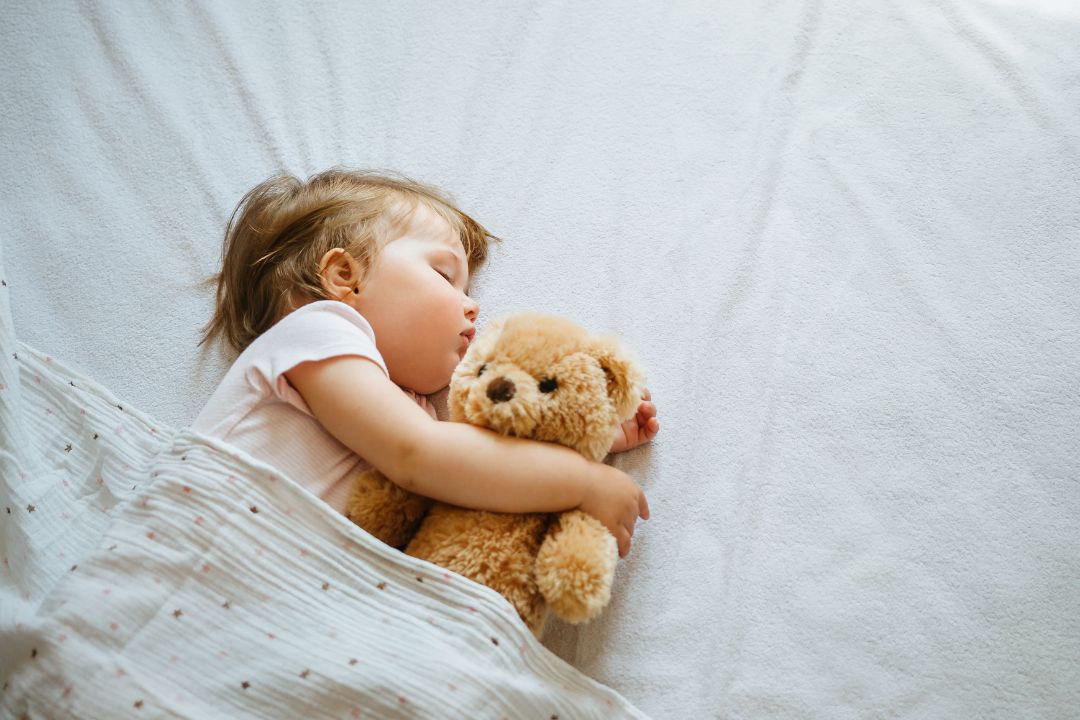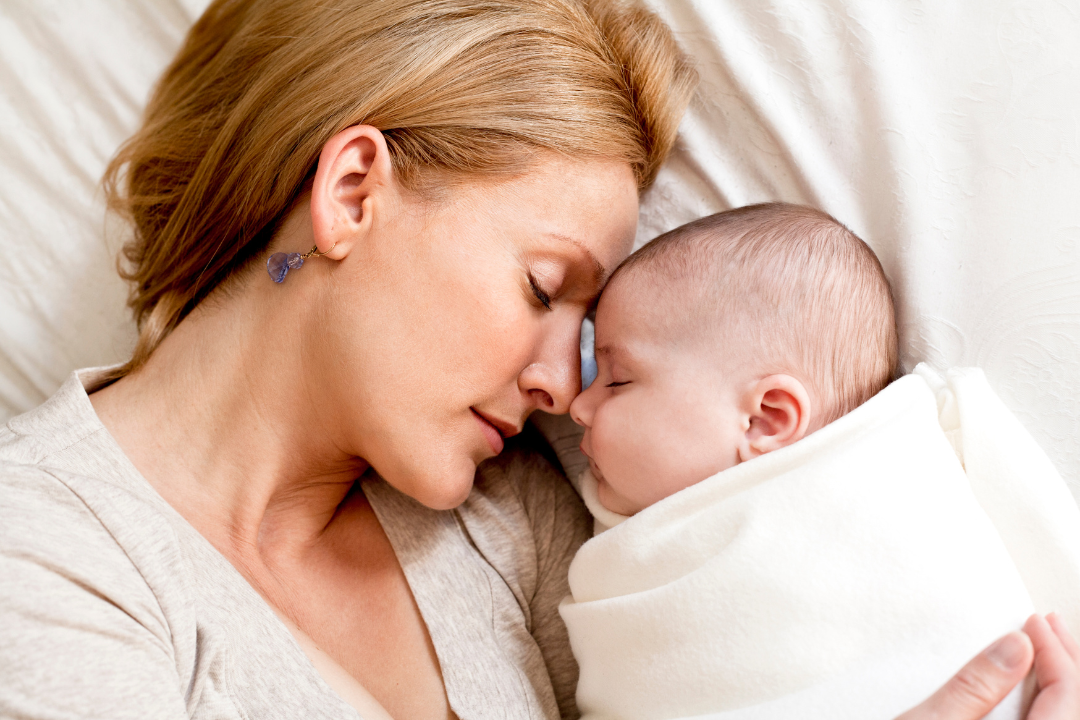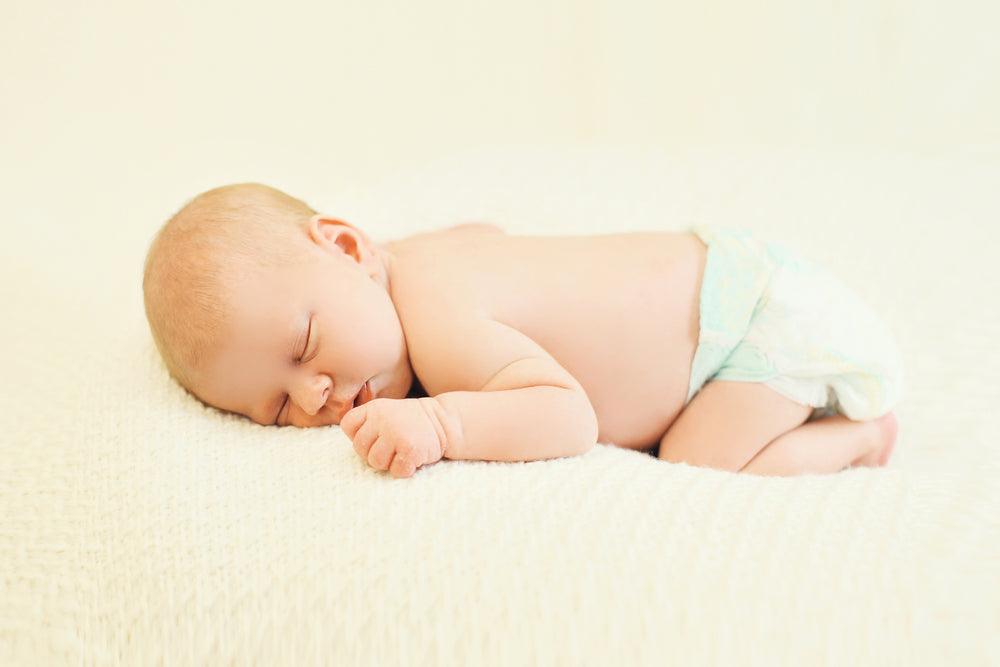It can be heartwarming to watch your baby grow and learn. It’s fun when they pick a favorite toy or stuffed animal. It can be tempting to give your baby a stuffed animal in their crib. But when can your baby sleep with a stuffed animal?
Letting Your Baby Sleep with a Stuffed Animal
Perhaps your little one seems to have a favorite stuffed animal or blanket. This is affectionately called a “lovey” by those who know. A lovey can even be a favorite book, plastic toy, or even a bedsheet. Children will keep this item nearby and grab it when they need comfort.
The Psychology of Comfort Objects
Even before they are interacting with other children, you may find your child playing with their lovey like it’s alive. Psychologists understand that young children start giving objects human qualities as they start to become aware that they are individuals separate from their mothers.
When you give your baby a stuffed animal they can learn how to deal with big emotions, especially when you’re not next to them. They tend to pick a favorite lovey somewhere between 6- and 12-month-old.
They can be attached to this item for years to come. This isn’t a sign of weakness or anything bad. It’s a natural way that babies learn to interact with their world! Some babies never sleep with a lovey. This is okay, too.
It can feel reasonable to let your baby sleep with a stuffed animal that they have deemed their favorite. The idea that a stuffed animal can help your child put themselves back to sleep in the middle of the night without your help can sound like a relief. But at what age is a comfort object safe in the crib? When can you let your baby sleep with a lovey?
Safe Sleep and SIDS
The American Academy of Pediatrics has offered safe sleeping recommendations since 1992 as a way to combat sudden infant death syndrome (SIDS). Since then, the number of babies who are victims of SIDS in the US has been cut in half.
No one knows what causes SIDS. It’s simply a diagnosis where all other potential causes of death have been ruled out. But there are certain things we know about SIDS.
First, SIDS happens when babies are sleeping. Second, SIDS happens before age one. Third, the environment in which the baby sleeps can lead to SIDS or other sleep-related causes of death.
Thankfully, there are things that you can do to diminish the risk of SIDS:
- Always place your baby to sleep on their back.
- If your baby sleeps in your room, they should sleep in a separate crib close to your bed.
- Cribs should be placed out of reach of cords, curtains, or anything that can be brought into the crib.
- Cribs should be approved by the Consumer Product Safety Commission (CPSC).
- Cribs should be empty with no soft bumpers or loose bedding.
- Cribs should be flat, without wedges, pillows, or positioners that claim to reduce SIDS.
- Your baby should be at a comfortable temperature.
- Your baby should not wear loose clothing, bibs, or accessories with cords while sleeping.
- Cribs should be without any blankets, pillows, stuffed animals, or crib toys.
It is safest for stuffed animals or any other kind of comfort item to be saved for times other than sleeping. Let them have their lovey when they are playing or need emotional support.
At What Age Can Baby Sleep with a Stuffed Animal
When can your baby sleep with a stuffed animal? Wait until they are 12-months-old. At this age, the risk for SIDS significantly decreases. Then you can safely give your baby a stuffed animal in a crib.
At this age, it will probably be easy to tell which toy is your child’s favorite. You can even ask them which one they will want to sleep with and they will show you!
Other Times to Give Your Baby a Lovey to Sleep with
Even if your child doesn’t sleep with a stuffed animal at 12-months-old, there are other times that it might be beneficial to give your baby a comfort object.
Big life events can be challenging for anyone, and this is especially true for babies and young children. They don’t understand things that are changing around them and have little control over most situations. Giving your baby a stuffed animal during these times can provide a lot of comfort.
When adults think of big changes, we think of death and divorce. These are definitely times that a lovey or comfort item can help your little one. But think of other events that can impact their world:
- Moving to a new house
- The birth of a sibling
- Moving from a crib to a bed
- Starting daycare
- Weaning off a pacifier
These are all changes when anxiety or confusion can cause distress in a young child. Give your baby a stuffed animal during these times to help them feel comforted and supported.
During big life events, it can also be comforting for older children to be involved in picking a lovey. Take them on an outing for the sole purpose of choosing a stuffed animal that they can use for comfort. It will reinforce the purpose of the comfort object when they are looking for support.
How to Pick a Stuffed Animal for Your Baby
Your baby may choose their lovey, or you’ll give one to them during a big life change. Either way, there are some things you want to think about.
Choose a Safe Stuffed Animal
When your baby sleeps with a comfort item, it will take a lot of wear and tear. Make sure that there aren’t dangerous parts. Pick something with embroidered eyes instead of beaded eyes.
Watch out for dolls with clothing or parts that come off. For children who are sensitive to materials or have allergies, check what the stuffing is made of.
Prepare to Give Your Baby a Lovey
While some children will be ready the first night, some need help to sleep with a stuffed animal. To give your baby a stuffed animal to help with a life change, there are some things you can do to encourage them to take it.
When your child is playing, give them the object. Have it next to them when you are comforting them. Bring it on car rides so they have something to play with. When you’re putting them to bed at night, let them cuddle with it during your nighttime routine. Whatever you do, be consistent - check out our video baby monitors and our baby breathing monitors, to help prepare you for when your child goes to sleep.
The other thing you can do is sleep with the item for a few nights. Babies are comforted by the familiar scent of a parent. This can encourage them to accept a lovey when they need emotional support because it will remind them of you.
Pros and Cons of Sleeping with a Stuffed Animal
There are both pros and cons with letting your baby sleep with a stuffed animal. Here’s a brief overview of the major pros and cons:
Pros
- They can minimize separation anxiety when babies are away from their parents.
- They can help children feel emotionally supported in all kinds of situations that make children feel out of control.
- Babies can use them to put themselves back to sleep when they wake up in the middle of sleep times.
Cons
- If you misplace a lovey, it can cause a lot of emotional distress for both parent and child.
FAQ about Stuffed Animals for Babies
Here are some of the most common questions parents have about letting their baby sleep with a stuffed animal:
Can I Give My 6-Month-Old a Stuffed Animal?
Some pediatricians say it’s okay for your baby to sleep with a stuffed animal when they are as young as 6-months-old. The AAP suggests the risk of SIDS is still too high at this age. Wait until they are 12-months-old.
Are Microwavable Aromatherapy Stuffed Animals Safe to Sleep with?
No, they are not to be left with your baby when they’re sleeping. While there are no current recommendations by the AAP, manufacturers suggest their products should always be used under close adult supervision.
Should My Baby Take Their Lovey Everywhere?
There’s nothing wrong with this. Just be aware that when your child takes their stuffed animal out and about, there’s a risk of damaging or losing it. Consider introducing one lovey for home and one for places like school.
How Do I Replace a Worn-Out Stuffed Animal?
Plan ahead and purchase a duplicate of your baby’s lovey. Then you’ll be prepared if something happens to the original. But be aware that some children won’t take the replacement.
When Should My Child Stop Sleeping with a Stuffed Animal?
There is no recommendation for when a child should stop sleeping with a comfort item. Some children and even adults find it therapeutic to sleep with a stuffed animal.
Giving Your Baby a Stuffed Animal to Sleep with
So, when can your baby sleep with a stuffed animal? Your baby can sleep with a stuffed animal safely after they are 12 months old. Give your baby a stuffed animal for the emotional benefits it can provide to them. It can also warm your heart to see them cuddling with their lovey!



